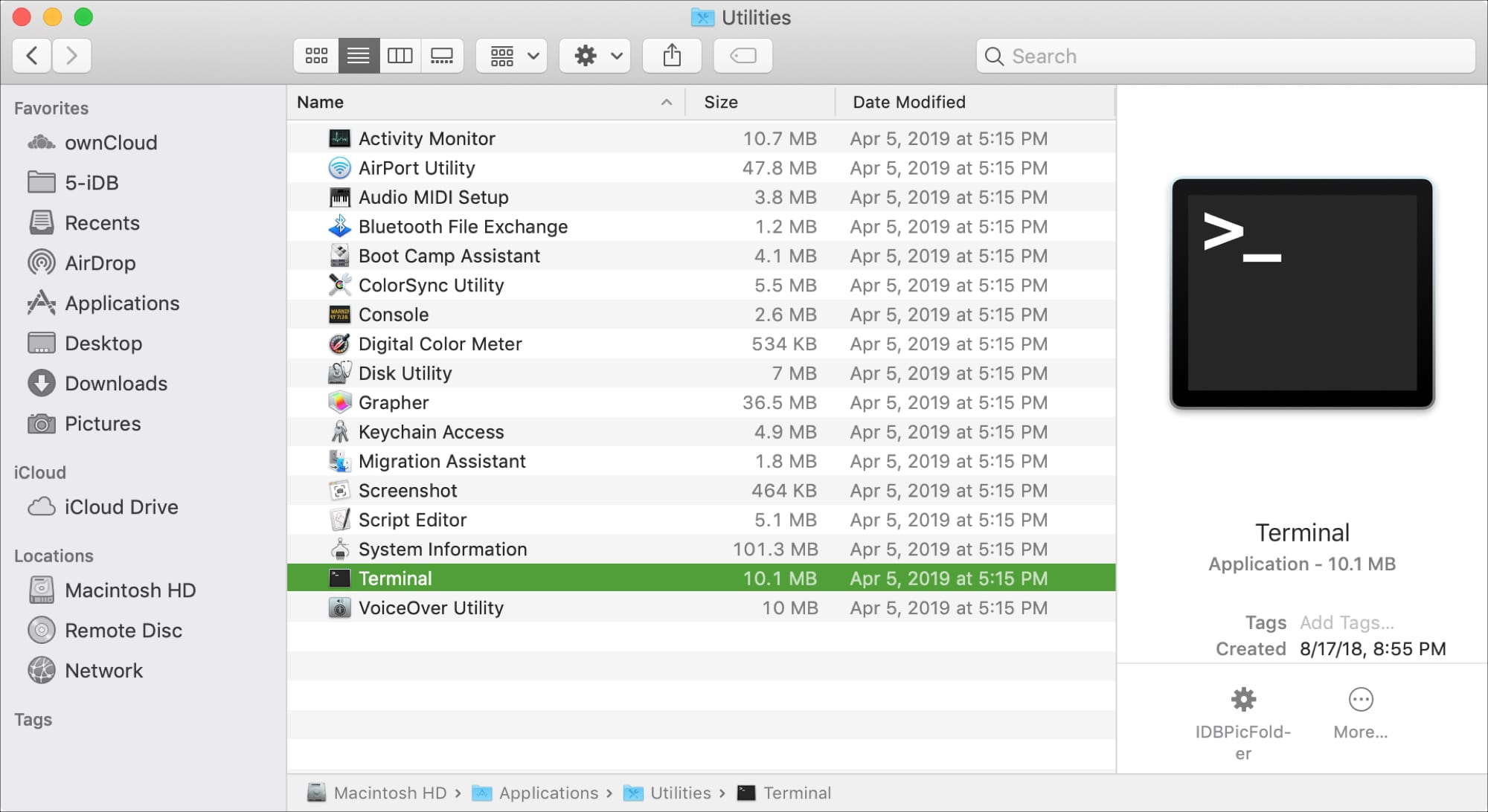

- FINDER OPEN IN TERMINAL HOW TO
- FINDER OPEN IN TERMINAL MAC OS X
- FINDER OPEN IN TERMINAL FULL
- FINDER OPEN IN TERMINAL WINDOWS 10
- FINDER OPEN IN TERMINAL CODE
FINDER OPEN IN TERMINAL HOW TO
This tutorial will show you how to add or remove the Open in Windows Terminal context menu for all users in Windows 10.
FINDER OPEN IN TERMINAL WINDOWS 10
Starting with Windows 10 build 21337 and later, Windows Terminal is now an inbox app. If you have the Windows Terminal app installed in Windows 10, you will have a Open in Windows Terminal context menu available by default when you right click on a folder, or the background of an opened directory (folder or drive). Its main features include multiple tabs, panes, Unicode and UTF-8 character support, a GPU accelerated text rendering engine, and custom themes, styles, and configurations. The Windows Terminal is a modern, fast, efficient, powerful, and productive terminal application for users of command-line tools and shells like Command Prompt, PowerShell, and WSL. There is a bug in 10.7 and 10.8 (but not in 10.9 or 10.6) where Finder ignores windows created after the last time focus was moved to another application and back when getting the insertion location property.How to Add or Remove "Open in Windows Terminal" context menu in Windows 10 Set p to POSIX path of (target of Finder window 1 as alias) If you use 10.7 or 10.8, change tell application "Finder" to set p to POSIX path of (insertion location as alias) to: tell application "Finder" running a command, displaying a man page, or running emacs.

They reuse the frontmost tab if it is not busy, e.g.They use the folder on the title bar instead of requiring you to select a folder first.If you assign the New Terminal Tab at Folder service a keyboard shortcut, it doesn't work in column view. As of 10.9, there is a bug where services that receive folders as input are never listed in the services menu in column view.The first two scripts have a few advantages compared to the services added in 10.7: Tell (launch session "Default") of result to write text "cd " & quoted form of p Tell application "System Events" to keystroke "t" using command downĪlways create a new tab (iTerm 2): tell application "Finder" to set p to POSIX path of (insertion location as alias) Reuse an existing tab or create a new tab (Terminal): tell application "Finder" to set p to POSIX path of (insertion location as alias) If (exists window 1) and not busy of window 1 thenĭo script "cd " & quoted form of p in window 1 Reuse an existing tab or create a new window (Terminal): tell application "Finder" to set p to POSIX path of (insertion location as alias) You could also assign a shortcut to a script like the ones below. You can change the icon in the Finder by following the instructions here (change the icon of the application you created with Automator).Ĭd "$(osascript -e 'tell app "Finder" to POSIX path of (insertion location as alias)')" Move the application to the Finder icons bar while holding ⌘ : Set _window to (create window with profile "Default")Ĭlick "File" -> "Export" to export as an. change directory in iTerm (version >= 3) Set _cwd to quoted form of (POSIX path of (folder of the front window as alias))
FINDER OPEN IN TERMINAL CODE
Paste the code below: - get the current directory in Finder
FINDER OPEN IN TERMINAL FULL
Here's the full procedure to follow to create a shortcut in the Finder. Go back to the parent folder, select the relevant folder, then activate the service via the Services menu or context menu.įor those using iTerm, the AppleScript syntax has change in iTerm version 3. You cannot simply have the folder open and run the service "in place". Note: The New Terminal at Folder service will become active when you select a folder in Finder. If you drag onto a tab (rather than into the terminal view) it will execute a complete cd command to switch to that directory without any additional typing.Īs of OS X Mountain Lion 10.8, Command-Dragging into a terminal will also execute a complete cd command. In addition, you can now drag folders (and pathnames) onto the Terminal application icon to open a new terminal window, or onto a tab bar in a terminal window to create a new tab in that window. Look for "New Terminal at Folder" and "New Terminal Tab at Folder". You can enable these services with System Preferences > Keyboard > Keyboard Shortcuts > Services. They also work with absolute pathnames selected in text (in any application).
FINDER OPEN IN TERMINAL MAC OS X
As of Mac OS X Lion 10.7, Terminal provides Services for opening a new terminal window or tab at the selected folder in Finder.


 0 kommentar(er)
0 kommentar(er)
